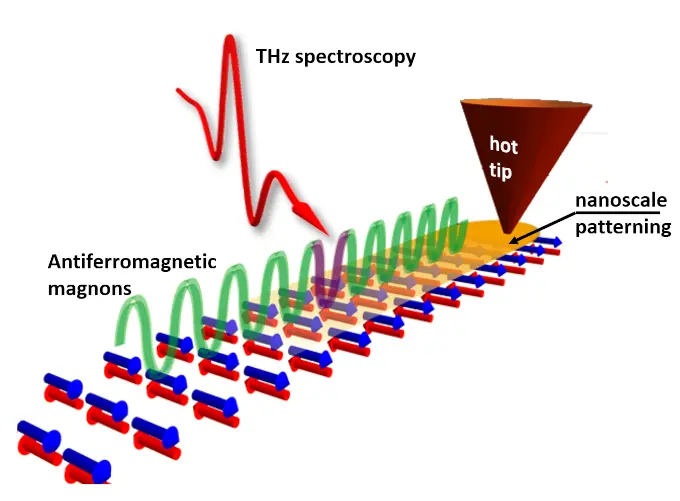Start
28/09/2023
End
28/02/2026
Status
In progress
PATH
Start
28/09/2023
End
28/02/2026
Status
In progress
PATH

Patterning of Antiferromagnets for THz operation
With the end of Moore’s law and the fast growth of Internet of Things applications, information technology needs to find new efficient mechanisms for information transmission and processing, enabling nanoscale integration and power saving. Spintronics is considered as one of the promising candidate for beyond CMOS computing. However the GHz operation speed of ferromagnets and their difficulties in achieving high packing density due to their stray fields represent fundamental limitations in the path towards application. In this framework, antiferromagnets (AF), with their THz dynamics and absence of net magnetization, have been
proposed for overcoming these limitations. However, the absence of straightforward ways to control the magnetic properties of AFs and the difficulties in probing their magnetic order has strongly limited the development of AF magnonics. In this context, the PATH project proposes a new approach to control and study the static and dynamic magnetic properties of AFs. The recent development of thermally assisted scanning probe lithography (t-SPL) opened the extraordinary opportunity to control magnetic properties in AFs with unprecedented sub-10 nm resolution. In addition, the recent pioneering works on the use of THz radiation on
magnetic materials, gave the possibility to access the dynamics of AFs and study coherent magnon modes. By using t-SPL in
combination with THz spectroscopy, the PATH project aims to establish a new paradigm for exploiting AFs in spintronics, through the following ambitious objectives:
a. To achieve nanoscale control of the static magnetic properties in AFs, by using the recently developed t-SPL
technique to directly pattern with nanometer resolution spin textures and anisotropy landscapes.
b. To tune the dynamic properties and magnonic response of AFs by exploiting either tailored spin textures or
magnonic crystals based on the modulation of the magnetic anisotropy or exchange interaction.
By merging sub-10 nm resolution, AFs and THz characterization, this challenging project will open the path to the application of AFs for ultrafast, compact and energy efficient novel devices.